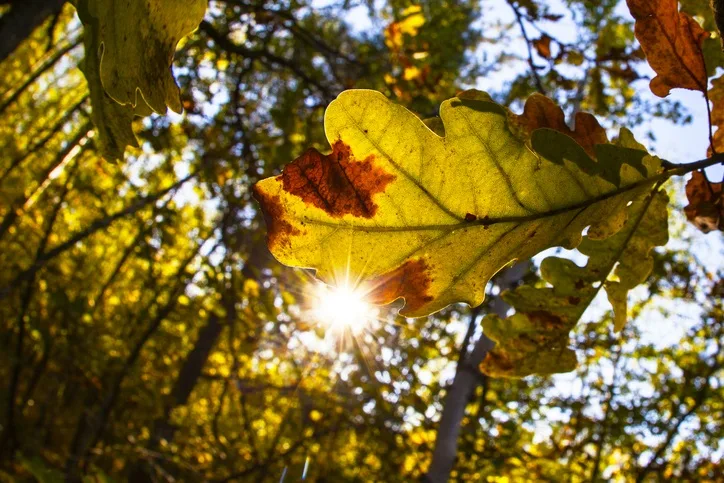
Sweet-smelling fungus may be a threat to Ontario trees

Courtesy: Getty Images
Arborists in Southern Ontario are gearing up for the potential arrival of a devastating fungi known as oak wilt, according to recent reports.
Oak wilt is caused by a fungus that develops on a tree’s outer sapwood, leading to a restricted flow of water and nutrients that often kills the tree. As the name implies, the leaves on trees suffering from oak wilt typically wilt and turn brown. When the infection becomes more advanced, large patches of white, grey or brown appear on the tree’s bark, emitting a fruity smell that some liken to Juicy Fruit gum. Naturally, the sweet scent attracts insects like picnic beetles, which carry the fungal spores and play a key role in its spread. It can also be spread through root-to-root contact, and the movement of firewood.
The origin of oak wilt is unknown, but experts believe it’s exotic to the U.S., where it tends to be most widespread. Oak wilt was first identified in the 1940s, and research has shown that all oak species are susceptible to it, though red oaks tend to be the most sensitive. “I have never seen a red oak survive in an infected area,” says Bill Cook, a forester for Michigan State University Extension, who works with private landowners, the forest industry, and public agencies to implement forestry education programs across the Upper Peninsula.
Although there have ben no confirmed cases of oak wilt in Canada, the fungus is prevalent in the U.S., and has been confirmed in more than 20 states. In Michigan, oak wilt has the potential to impact 149 million trees, and has already affected areas as close as Belle Isle, which is just 600 metres from the Canadian border.
SEE ALSO: Some beaches are banning this sunny day must-have
Because it’s located along Highway 401, the city of London could be on the front lines in the fight against the fungus if it does cross the border. That’s why the city’s taking serious precautions to help prevent its spread, both through a public awareness campaign and increasing training among city staff. The city’s also following best management practices, like scheduling routine, non-emergency pruning of oaks outside the months of April to July when picnic beetles are active.
“People tend not to act pro-actively, and the nature of the disease is not particularly visible until it’s too late,” Cook says. “Unless an aggressive [prevention] campaign is launched early, the disease will run through most of the oak resource of a region.”
VIDEO: MELTING ICE MAKES TREE LOOK LIKE A LAVA LAMP
How can you join the fight and help prevent the spread of oak wilt? The key is to avoid wounding trees—pruning or cutting branches—from mid-April through to mid-July. Tree wounds can also be caused by broken branches, animals, infections and fire, which all have the capacity to damage a tree’s food and water conduction and expose the inside of the tree to bacteria and fungi organisms. If a tree is wounded, either from pruning or other factors, it should be covered with latex-based paint. According to Cook, it’s one of the few instances where covering tree wounds is recommended. You should also be cautious with moving firewood, in case an infected tree is part of the pile. If you do spot infected firewood, it should be burned immediately.
It’s possible to mistake other oak maladies for oak wilt, but you’ll know there’s a problem when an oak’s leaves fully brown and drop in a matter of just a couple of weeks during the growing season. Unfortunately, if a tree has reached this stage, it likely can’t be saved.
“Prevention is the best strategy,” Cook says.









